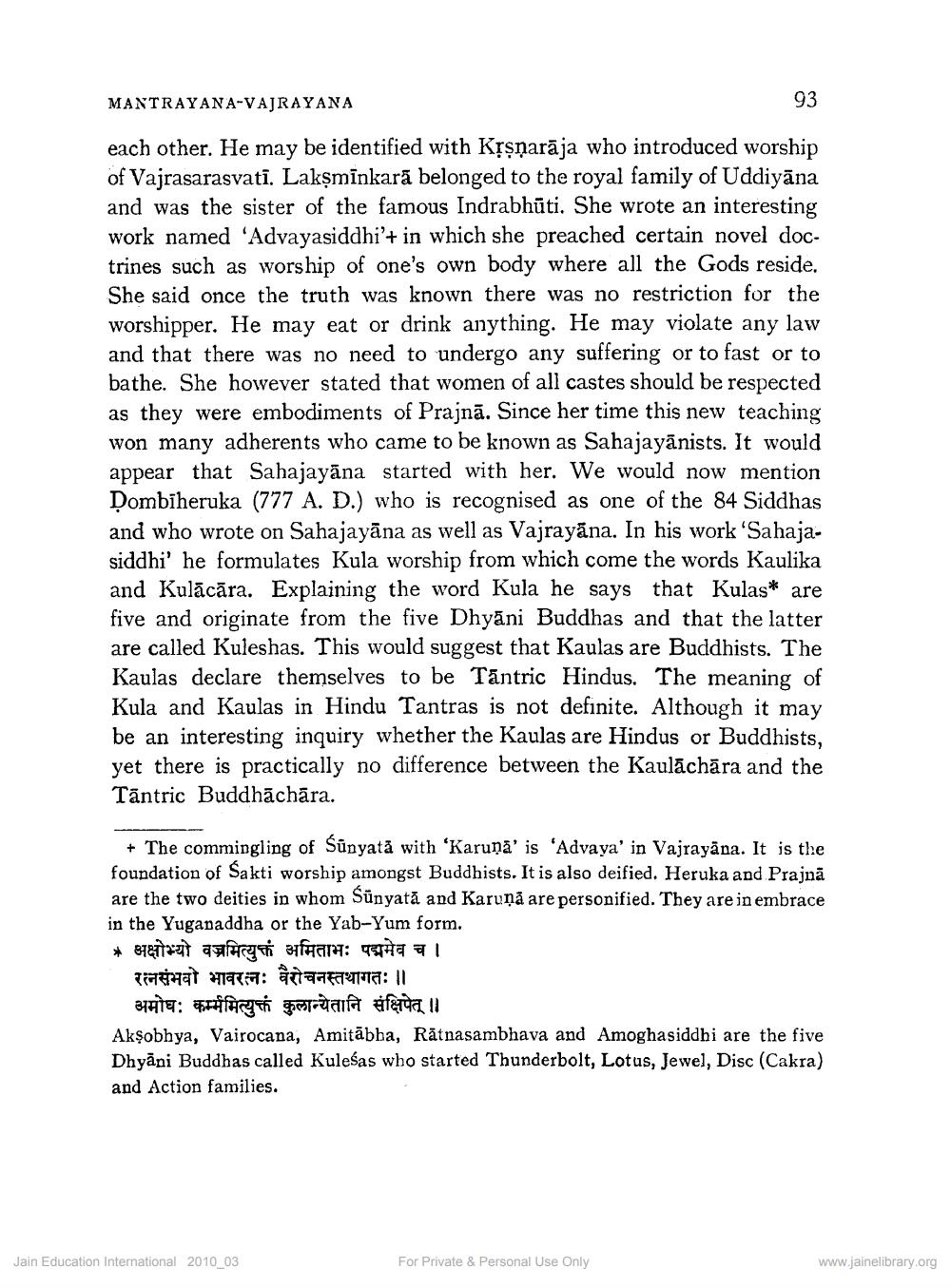________________
MANTRAYANA-VAJRAYANA
93
each other. He may be identified with Krsnarāja who introduced worship of Vajrasarasvati. Lakşmīnkarā belonged to the royal family of Uddiyāna and was the sister of the famous Indrabhūti. She wrote an interesting work named 'Advayasiddhi'+ in which she preached certain novel doc trines such as worship of one's own body where all the Gods reside. She said once the truth was known there was no restriction for the worshipper. He may eat or drink anything. He may violate any law and that there was no need to undergo any suffering or to fast or to bathe. She however stated that women of all castes should be respected as they were embodiments of Prajnā. Since her time this new teaching won many adherents who came to be known as Sahajayānists. It would appear that Sahajayāna started with her. We would now mention Dombīheruka (777 A. D.) who is recognised as one of the 84 Siddhas and who wrote on Sahajayāna as well as Vajrayāna. In his work 'Sahaja siddhi' he formulates Kula worship from which come the words Kaulika and Kulācāra. Explaining the word Kula he says that Kulas* are five and originate from the five Dhyāni Buddhas and that the latter are called Kuleshas. This would suggest that Kaulas are Buddhists. The Kaulas declare themselves to be Tantric Hindus. The meaning of Kula and Kaulas in Hindu Tantras is not definite. Although it may be an interesting inquiry whether the Kaulas are Hindus or Buddhists, yet there is practically no difference between the Kaulāchāra and the Tāntric Buddhāchāra.
+ The commingling of Sūnyata with 'Karunā' is 'Advaya' in Vajrayāna. It is the foundation of Sakti worship amongst Buddhists. It is also deified. Heruka and Prajnā are the two deities in whom Sūnyatā and Karuņā are personified. They are in embrace in the Yuganaddha or the Yab-Yum form. * अक्षोभ्यो वज्रमित्युक्तं अमिताभः पद्ममेव च ।
रत्नसंभवो भावरत्नः वैरोचनस्तथागतः ॥
अमोघः कर्ममित्युक्तं कुलान्येतानि संक्षिपेत् ॥ Akşobhya, Vairocana, Amitābha, Rātnasambhava and Amoghasiddhi are the five Dhyāni Buddhas called Kulešas who started Thunderbolt, Lotus, Jewel, Disc (Cakra) and Action families.
Jain Education International 2010_03
For Private & Personal Use Only
www.jainelibrary.org




